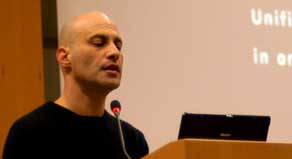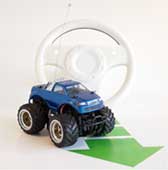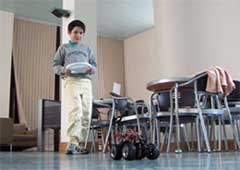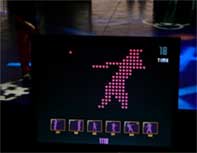 Yesterday i attended the Italian edition of World Usability Day and found it really good.
Yesterday i attended the Italian edition of World Usability Day and found it really good.
The conference focused on two themes: How prototypes can promote usability and Integrating usability and creativity to achieve ‘pleasure of use’. Yaniv Steiner was part of the first panel and he gave a truly inspiring talk. The audio is online, the slides of his presentation and the links as well (and no, don’t even try to ask, i have no intention to do anything similar for any of the talks i give) so i’ll just sum up his ideas.
Yaniv is a prototyping specialist, game player and developer, software and hardware developer, Head of R&D at experientia and the founder of Nastypixel which is a “prototyping sweatshop” and i’m sure i’m forgetting something here. I first met him when he was teaching at the Interaction Design Institute in Ivrea. He’s also teaching at the University of Architecture in Venezia and at the Bezalel Academy of Art and Design in Jerusalem.
He doesn’t define himself as an interaction designer, because he believes that Interaction Design is an “entity made of designers, artists, technologists, and cognitive scientists.” The key is the communication, the unification of language and methods to achieve one goal: the product.

While he was working at Ivrea he lead a brilliant project called InstantSOUP, it’s a path into electronics using an approach of “learning by makingâ€?, introducing electronic prototyping in a playful, non-technical way to designers and artists. It makes the first steps into the world of physical prototyping almost as easy as preparing Instant Soup.
Two of his students at IDII, Michael Albers and Shawn Bonkowski, applied the lessons of InstantSOUP to FloorIt, arcade car racing brought to life.


Yaniv also talked about process, one of the most important elements of rapid prototyping:
1. Collect the user data, observe it, understand it and act by it. Take your first assumption, try it on your own team, then push it forward by taking it out of the team and give it to users (the car racing toy to kids for example) and observe, take pictures, make videos, etc.
2. Stay in Beta. In software development you develop a beta version, test it, twitch it, correct its problems then you sell it as a “product.” That’s an old fashioned way to look at things. E.g. Microsoft Vista vs Google. So keep it open and design for changes. Your first assumption is not what you’re going to end up with at the end.
For him, computer game is the best place to check usability. In game, usability is so important it has its own name and it’s called Game Play. If it’s not fun no one will play your game. That’s a real challenge because it means that you have to let people play for months or even months before deciding that the game is a success. Today people don’t design the core of the games, they design the editor. This could be applied to other contexts, not only in software.
Nastypixel and experientia work on the concept of assumption-breaking design, assumptions give the kick off but as soon as you start designing forget about those first assumptions you had because it’s going to change all the time. Example: a project he designed along with Ofer Luft. SmartRetina, a lightfast gesture-tracking platform. After having developed that platform they needed a product and came up with Mossalibra, a kind of computer game for clubs.


While dancing to the music, the user (represented in pixelated form as a pure gesture) can mimic a given set of gestures in order to gain points. These gestures are actually pixelated snapshots of previous players.
The developers were quite surprised by the way people used it: they loved MOssalibra but not because of the game element but because it allowed them to glorify themselves in front of other clubbers.
They also converted the SmartRetina system into something else: a visual catalogue of recent art work exhibited at the Fondazione Sandretto Re Rebaudengo. It was premiered last weekend at Artissima.
